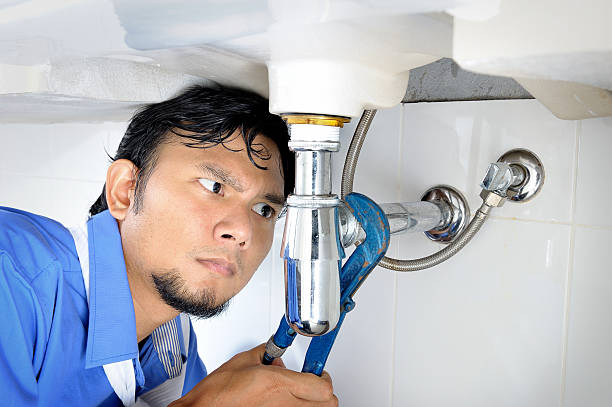Commercial plumbing systems are integral to the functionality and safety of business operations. Unlike residential systems, they face unique challenges due to their larger scale, higher usage, and stricter compliance requirements. This expanded article aims to provide an in-depth understanding of common commercial plumbing problems, their causes, solutions, and prevention strategies. We will explore various topics under numerous headings and conclude with an expanded FAQ section, offering concise answers to frequent queries.
Pipe Leaks and Corrosion
Overview: Pipe leaks in commercial settings are often more complex than in residential systems. They can be caused by natural corrosion, high water pressure, or environmental factors.
Prevention and Solutions: Use corrosion-resistant materials and ensure proper installation. Regular pressure checks and insulation against environmental factors can also prolong pipe life.
Clogged Drains and Toilets
Overview: The higher frequency of usage in commercial buildings leads to more frequent clogs. This can be exacerbated by improper disposal of waste and sanitary products.
Prevention and Solutions: Educating staff and visitors on proper disposal, installing drain strainers, and routine professional cleaning can help.
Faulty Water Heaters
Overview: Commercial water heaters are essential for many businesses. They can suffer from sediment build-up, component wear, or scaling.
Prevention and Solutions: Regular flushing, thermostat checks, and replacing parts like anodes can extend heater life and efficiency.
Sewer Line Problems
Overview: Sewer line issues in commercial properties can be catastrophic, leading to health hazards and business closure.
Prevention and Solutions: Use video inspections for early detection of blockages or damages, and ensure regular professional cleanings.
Water Pressure Issues
Overview: Water pressure problems can disrupt operations and indicate larger issues like leaks or blockages.
Prevention and Solutions: Install pressure regulators and monitoring systems, and conduct regular system checks.
Fixture Wear and Tear
Overview: Heavy use in commercial settings accelerates the wear of fixtures, leading to leaks and malfunction.
Prevention and Solutions: Regular checks, replacing worn components, and choosing commercial-grade fixtures can help.
Backflow Problems
Overview: Backflow is a serious health risk, allowing contaminated water to enter the clean water supply.
Prevention and Solutions: Install and regularly test backflow prevention devices, and maintain a separation between potable and non-potable water systems.
Grease Trap Issues
Overview: Inefficient grease traps in commercial kitchens can lead to blockages and unpleasant odors.
Prevention and Solutions: Regular cleaning and proper sizing of grease traps are essential for effective operation.
Compliance and Code Violations
Overview: Failing to comply with plumbing codes can result in fines
and legal complications, as well as potential health risks.
Prevention and Solutions: Stay updated on local plumbing codes, and schedule regular compliance audits with certified plumbing professionals.
Inefficient Plumbing Design
Overview: Inadequate plumbing design can lead to chronic issues like slow drains, low water pressure, and increased wear and tear.
Prevention and Solutions: Consulting with experienced plumbing engineers during the design phase can ensure efficiency and reliability. Retrofitting might be necessary for older buildings.
Water Quality Concerns
Overview: In commercial settings, poor water quality can affect health, operations, and machinery.
Prevention and Solutions: Regular water testing and installing filtration systems can mitigate these issues.
HVAC-Related Plumbing Issues
Overview: HVAC systems in commercial buildings can contribute to plumbing problems like condensation leaks and blockages.
Prevention and Solutions: Regular HVAC maintenance and ensuring proper integration with the plumbing system can prevent such issues.
FAQs:
Q1: How does commercial plumbing differ from residential plumbing?
A1: Commercial plumbing typically involves larger scale systems, higher usage, and more stringent codes and regulations.
Q2: Can environmentally friendly plumbing solutions be implemented in commercial buildings?
A2: Yes, options like low-flow fixtures and water recycling systems
can be implemented to enhance sustainability and reduce costs.
Q3: What is the most common cause of plumbing emergencies in commercial buildings?
A3: Clogged drains and toilets, pipe bursts, and sewer backups are among the most common causes.
Q4: Are there specific plumbing requirements for different types of commercial buildings?
A4: Yes, different types of commercial buildings, like restaurants, hospitals, and office buildings, have unique plumbing needs and regulations.
Q5: How can technology be used to improve commercial plumbing systems?
A5: Advanced technologies like smart water meters, automated leak detection systems, and energy-efficient water heaters can greatly improve system efficiency and reliability.
Q6: Is it more cost-effective to repair or replace aging commercial plumbing systems?
A6: This depends on the condition of the system. While repairs might be cost-effective in the short term, replacing an outdated system can be more economical in the long run.
Conclusion:
Commercial plumbing problems, if not addressed properly, can lead to significant operational disruptions and financial losses. Understanding these common issues, their preventive measures, and solutions is crucial for maintaining a safe, efficient, and compliant commercial environment. Regular maintenance, staying informed about new technologies and regulations, and working with experienced plumbing professionals are key strategies for managing commercial plumbing systems effectively.

A group of home improvement enthusiasts and bathroom design experts, combines in-depth knowledge and a shared passion to deliver engaging, informative content that guides readers through the world of bathroom innovation and style.

Leave a Reply